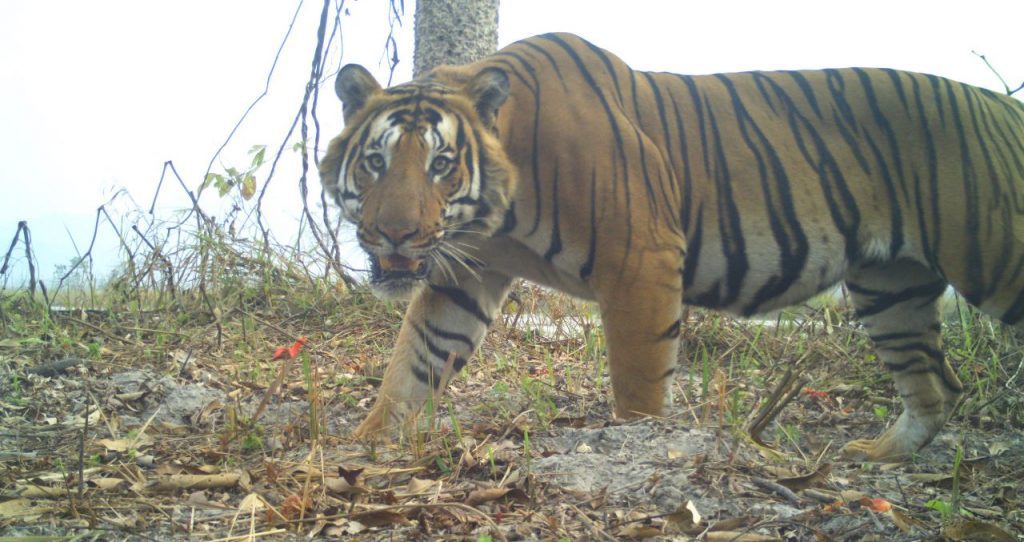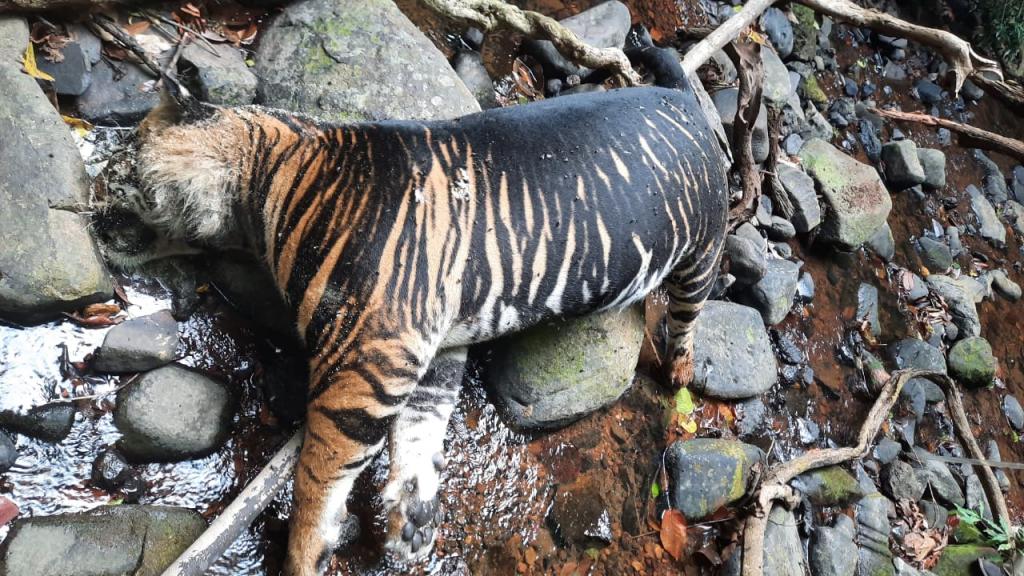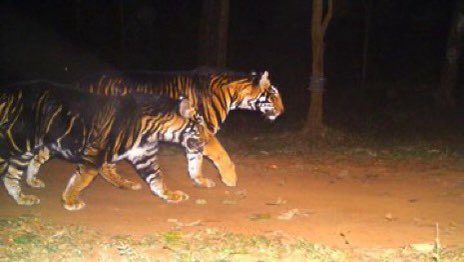On a sunny winter day in 1975, forest officials along with two foreign tourists were touring the Similipal Tiger Reserve in Odisha’s Mayurbhanj district, when their eyes caught something that they left them not just flabbergasted but also in awe for its sheer beauty and uniqueness. It was a rare black tiger! And, officially, for the first time, it was recorded in India! Before that, there were many rumours of sightings of such tigers, but there was no official confirmation. But, this particular sighting made Similipal Tiger Reserve (STR) famous worldwide and brought visitors from all around the world to see the iconic tiger.
But, in reality, the black tiger, also called melanistic tiger, is a rare colour variant of the Bengal tiger and not a distinct species or geographic subspecies.
Indian Masterminds spoke to District Magistrate of Mayurbhanj, Mr. Vineet Bhardwaj, an IAS officer of 2012-batch, and Field Director of STR, Mr. Prakash Chand Gogineni, an IFS officer of 2009 batch, to know more about the rare black tigers of Simlipal.

ROAR OF THE BLACK BEAUTY
Similipal is home to a wide range of wild animals, besides 304 species of birds, 20 species of amphibians and 62 species of reptiles. It is spread over 3,000 square kilometers. Simlipal also has the highest rate of black tiger sightings in the world. Perhaps, it is the only place in the world where melanistic tigers are still found in the wild. Melanistic refers to ‘having a very dark skin or hair due to higher-than-normal level of the pigment’.
Field Director of Simlipal, Mr. Gogineni said, “The expanded black stripes in some Similipal tigers is due to pseudomelanism caused by a recessive mutation. In Similipal, the pseudomelanism is prevalent in 50% of the tiger population. Currently, it is estimated that about 15 tigers are melanistic in Similipal Tiger Reserve.”
The high prevalence of pseudomelanism in Similipal tigers is attributed to the population bottleneck between 2009 and 2014 when the tiger population fell to single digit in the tiger reserve. The population, however, has recovered since then. Currently, melanistic tigers are spread in all the ranges of the tiger reserve and are thriving.

Due to pigmentation on the body, there is an increase in the width of black stripes, making the animal look different from the normal coloured Royal Bengal Tiger which has yellow and black stripes, with yellow stripes being more prominent. The coat colouration and patterning that make the wild cats appear dark boil down to a single mutation in the Transmembrane Aminopeptidase Q (Taqpep) gene.
The melanistic tiger presence in Similipal has been known since 1975, but the first camera trap evidence came in 2007. There is a high probability (about 60%) that a tiger will have the mutant gene, if randomly selected from Similipal.

A TRAGIC INCIDENT
In May this year, a melanistic male tiger carcass was found inside the sanctuary. The dead tiger was identified as T-27, a male aged around 3.5 years.
It was after three decades that the death of a rare black tiger was reported in Simlipal and this can have a big impact on the population of the animal.
However, Mr Gogineni told Indian Masterminds, “The tiger died because of infighting.”

SAVING THE RARE TIGERS
The Administration of Mayurbhanj and the Forest department in Similipal are taking every possible step towards the Black Cat conservation.
DM of Mayurbhanj, Mr. Bhardwaj told Indian Masterminds, “We do not allow tourists to visit the core area. We have shifted the black tiger population from the core area of Similipal. Only few are left and we will shift them soon too. And it is a fact that if core areas do not have human population, then tigers thrive efficiently as there is no disturbance to them. It gives them a 100 % natural habitat. Plus, our forest officials have their eyes everywhere. No poaching incident has been reported in the near past.”

TIGER SIGHTING HISTORY
The Mayurbhanj area has a rich history of tiger sightings. While STR is placed in the northern part of Odisha’s Mayurbhanj district, geographically, it lies in the eastern end of the eastern ghat.
STR designated a tiger reserve in 1956 and brought it under Project Tiger in the year 1973. It was declared a biosphere reserve by the Government of India in June 1994. It has been a part of the UNESCO World Network of Biosphere Reserve since 2009.

“Before Independence, Mayurbhanj was a princely state. And people used to sight tigers at that time too. I will advise people who visit tiger reserves to please let the tigers live their natural lives in their habitats. Tiger reserve has a purpose, and we should all remember it,” Mr. Bhardwaj said in conclusion.

Tigers are symbol of sustainability of India’s forests…
— Susanta Nanda (@susantananda3) July 29, 2022
Sharing an interesting clip of a rare melanistic tiger marking its territory on international Tigers day.
From a Tiger Reserve poised for recovery of an isolated source population with a very unique gene pool. Kudos🙏🙏 pic.twitter.com/FiCIuO8Qj4

































